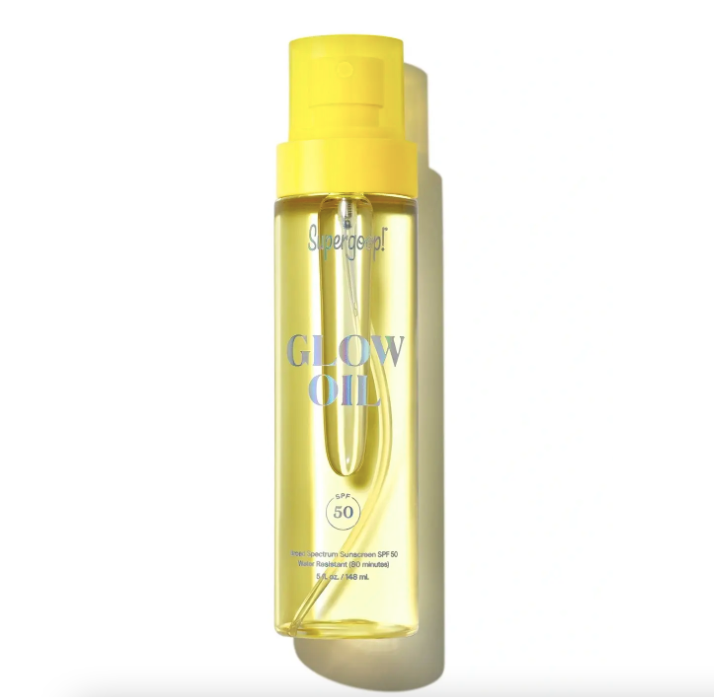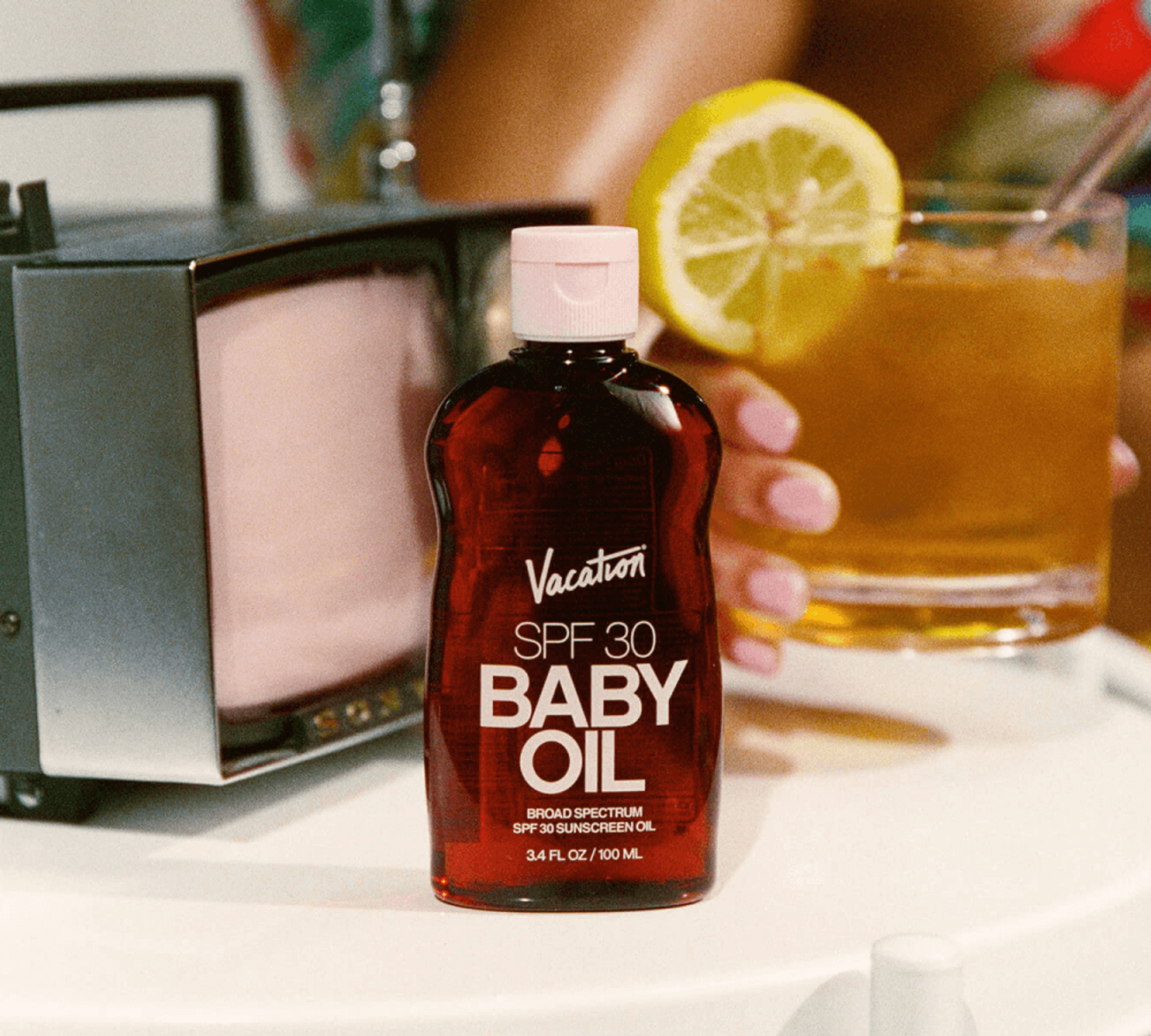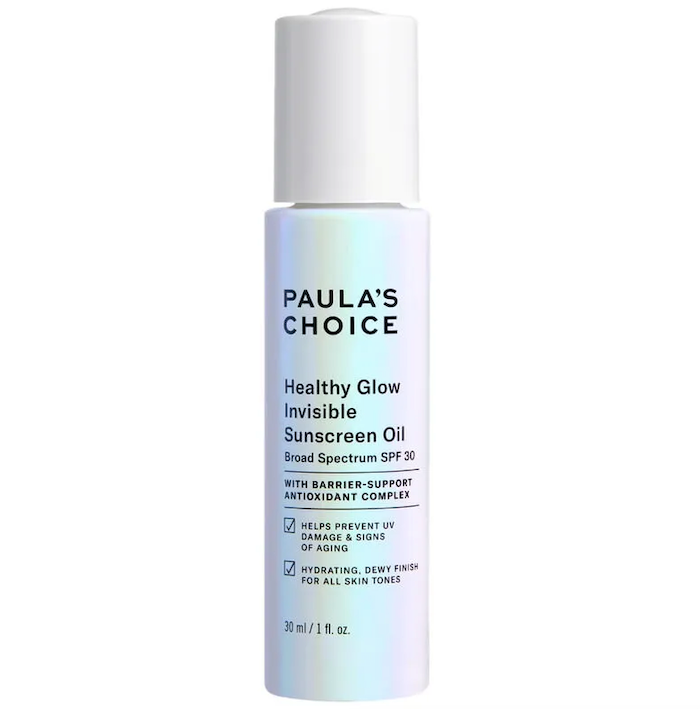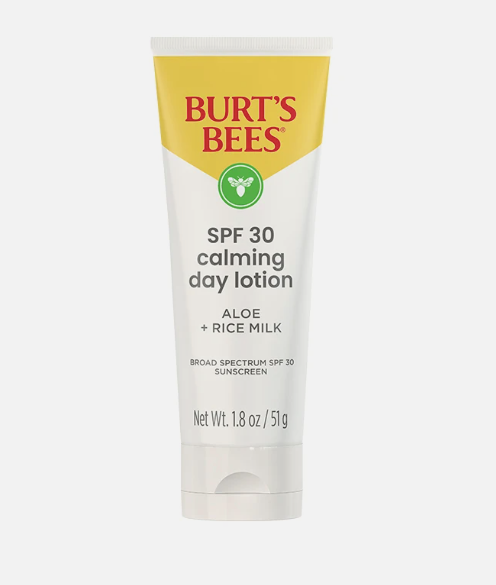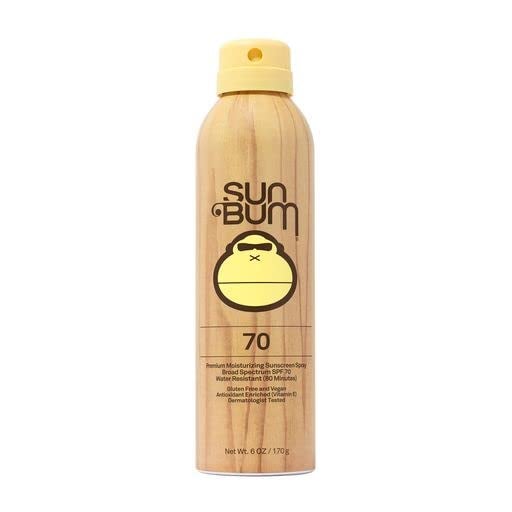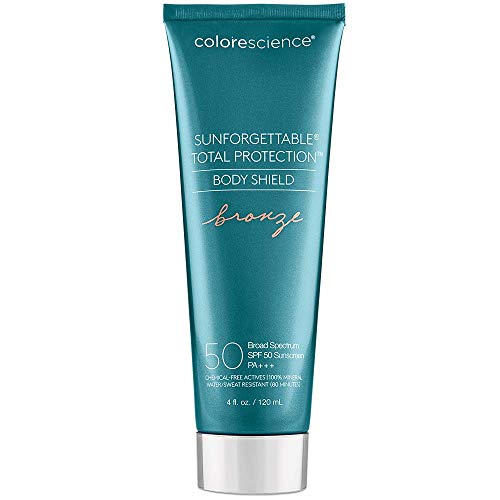The Rise & Fall Of Tanning Oil — & Its Perceived Sex Appeal
Photo: Joe Raedle/Getty Images.
Welcome to Sun Blocked, Refinery29’s global call to action to wake up to the serious dangers of tanning. No lectures or shaming, we promise. Instead, our goal is to arm you with the facts you need to protect your skin to the best of your ability, because there’s no such thing as safe sun.
While shopping for sunscreen ahead of a vacation recently, I spotted a recognizable brown spray bottle of tanning oil among the white tubes and aerosol cans. It seemed starkly out of place. I picked it up out of curiosity, clocking the SPF 15 label on the front. Sure, that’s better than nothing, but tanning oil with an SPF seems like an oxymoron at worst; at best, it's confusing, which comes with its own set of risks to unsuspecting sunscreen shoppers.
AdvertisementADVERTISEMENT
For many of us, tanning oil feels, smells, and is marketed towards nostalgia. It brings me right back to high school. On a hot summer day, between nannying jobs and soccer camp, we would convene at a house with a pool in the backyard. Before laying out on chairs draped with terry cloth towels, a few friends would coat themselves in tanning oil or baby oil in an effort to draw in the sun so their skin would burn and then create a darker tan. It worked, too: Come September, they were fried.
At the time, we just didn’t know any better. That was a decade ago, and a lot has changed since then in regard to what we know about the dangers of sun damage. Today, there's more research into UV protection and a reframe around historically sexy sun-seeking activities, like laying out in the sun for sport. Now we know that not only is unprotected sun exposure a bad idea when it comes to maintaining the condition of your skin as it ages, it's also extremely dangerous to your health, increasing your chances of developing skin cancer.
In this day and age, it feels disingenuous for sunscreen brands to sell tanning oils, seemingly promising something impossible to deliver: a safe tan from the sun.
How does tanning oil work?
Rubbing oil into the skin — whether it’s dedicated tanning oil or a baby oil, also made with mineral oil, a petrolatum derivative — lowers the refractive index of your skin, thereby increasing the absorption of the sun's UV rays. "Tanning oils work by actually attracting the sun’s ultraviolet (UV) rays to your skin, which could accentuate a tan, but can also lead to dangerous burns and an increased chance of both melanoma and non-melanoma skin cancer," says Elizabeth Hale, MD, a board-certified dermatologist and SVP of the Skin Cancer Foundation.
AdvertisementADVERTISEMENT
NYC-based dermatologist Shereene Idriss, MD, likens tanning oils to basting a turkey in the oven: "With an oil in the sun, you're baking your skin," she explains.
Are tanning oils safe?
Those classic tanning oils with minimal to no sun protection still exist, but the overall narrative around sun-basting is changing. Last year, there was a disturbing viral #sunburnchallenge going around TikTok that sparked a swift backlash among medical professionals and the general public. Soon after, TikTok announced it would remove videos promoting unsafe activities related to tanning, including the promotion of tanning oils, and add educational sun-protection content to the platform.
Although TikTok said it would "prohibit tan boosters, accelerators and products that stimulate, boost or increase melanin production and tan-through swimwear being advertised on [the] platform," according to this report from ABC Australia, some viral tanning videos are slipping through the cracks. This is happening because the ban doesn't include user-generated content, suggests the report. Obviously, for anyone who uses TikTok, the user-generated content is the influence of the platform and requires monitoring.
Decreasing the visibility of skin oiling and other dangerous sun-seeking behavior is important, especially on platforms with an audience of young, impressional people — but there's more we can do. Dermatologists agree tanning oils should be monitored (or phased out entirely) and there should be education surrounding the differences between an oil sunscreen and a tanning oil.
AdvertisementADVERTISEMENT
What's the difference between tanning oil and sunscreen oil?
Simply throwing in a low-factor SPF (which many brands have done) is not enough — in fact, it's borderline deceitful. "SPF tanning oils are [still] dangerous because they give the false impression that you can tan while your skin is fully protected," says DiAnne Davis, MD, a board-certified dermatologist. "It is very misleading. While some tanning oils may claim that they offer a sun protection factor, it is more than likely very low, which can do more harm to the skin."
In general, tanning oils with SPF should raise your suspicions. However, many sunscreen brands have started to make oil versions of sunscreen that actually offer high-factor SPF, designed for people who prefer oils to lotions. "Someone with dry skin would likely appreciate an SPF oil format," says Dr Hale. "People with darker skin tones who often see a white cast from other SPF formulas may also prefer an oil sunscreen, because they rub in completely transparent and are great on all skin tones."
So how are these sunscreen oils different from tanning oils? Beyond containing a high-factor SPF, protective sunscreen oil is typically free of the key ingredient in traditional tanning oil: mineral oil, which absorbs UV rays, potentially leading to sun damage on the skin. The other key differentiator is the marketing. A tanning oil comes in a brown bottle, suggestive of a tan, and the label will also make a suggestion of "tanning" or "darkening" the skin. By contrast, a sunscreen oil is just an oil version of sunscreen, promoting sun protection.
AdvertisementADVERTISEMENT
While there are many actually effective sunscreens oils like Supergoop! Glow Oil SPF 50 and Paula’s Choice Invisible Sunscreen Oil, here’s the rub: Similar to the way that we don't always apply enough SPF makeup to provide adequate protection without a base layer sunscreen underneath, it's easy to under-protect with an oil-based formula. That's because an oil spreads easier, so you feel protected when in reality, your coverage is too light to be protective.
"If the oil was made and truly tested to have SPF 30 efficacy — which it should if it's being marketed that way — there also should be education on how much people need to use to get the protection that they need," says Dr Idriss, putting the onus on the brands, not the consumer. "If a company is not educating about how much oil is actually required to get the SPF 30 benefit, then I think it's a little bit dangerous." With any sunscreen, you need six teaspoons for the entire body — that’s the size of a shot glass. That's a lot of oil, probably more than most people would think to apply as oil is greasy by nature. "With this type of product, [you need to] apply enough so that you see an even sheen on the skin after rubbing it in," Dr Hale says.
Dermatologists posit that brands should cut back on the tanning-positive marketing and instead promote education around proper sun protection. Dr Idriss has her own ideas about how to make this happen. "You know when you buy Motrin for kids and it has that little measuring cup on the cap?” she says. “I would put a measuring cup as the cap on an oil sunscreen, so you know how much you're supposed to apply.”
AdvertisementADVERTISEMENT
Really, the main fear with products like this is that people will use them specifically in an attempt to tan, treating them as a license to bask in the sun guilt-free. "I don't want people to think, 'Oh, I used an SPF tanning oil to get a healthy tan,'" says Dr. Idriss. As we know, a healthy tan obtained via UV does not exist.
What are safe alternatives to SPF tanning oil?
Most of the dermatologists cited here would steer their patients away from SPF oils entirely. "I do not recommend SPF oils," says Dr. Davis. "As a board-certified dermatologist, the only SPF products I recommend are broad-spectrum sunscreens that protect from both UVA and UVB rays, with an SPF of 30 or higher, and are either water-resistant or very water-resistant."
Dr. Davis recommends Burt’s Bees SPF 30 Calming Day Lotion, which may be an option for those with dry skin looking for extra hydration in a sunscreen. Plus, it doesn’t leave a white cast. "If you want that nostalgic vacation smell, Sun Bum has a spray that smells lovely and vacation-like," offers Dr. Idriss as another alternative. For someone after a fake tan, she calls out the Colorescience Body Shield Bronze SPF 50. "[It] is a mineral formula with a really nice bronze-y tint to it, so you're already looking bronzed when you're wearing it," says Dr. Idriss. The general guidance is against tanning oils (even if they have SPF) — there are simply safer alternatives. In 2023, oiling up just doesn't have the same sex appeal.
At Refinery29, we’re here to help you navigate this overwhelming world of stuff. All of our market picks are independently selected and curated by the editorial team. If you buy something we link to on our site, Refinery29 may earn commission.
AdvertisementADVERTISEMENT








